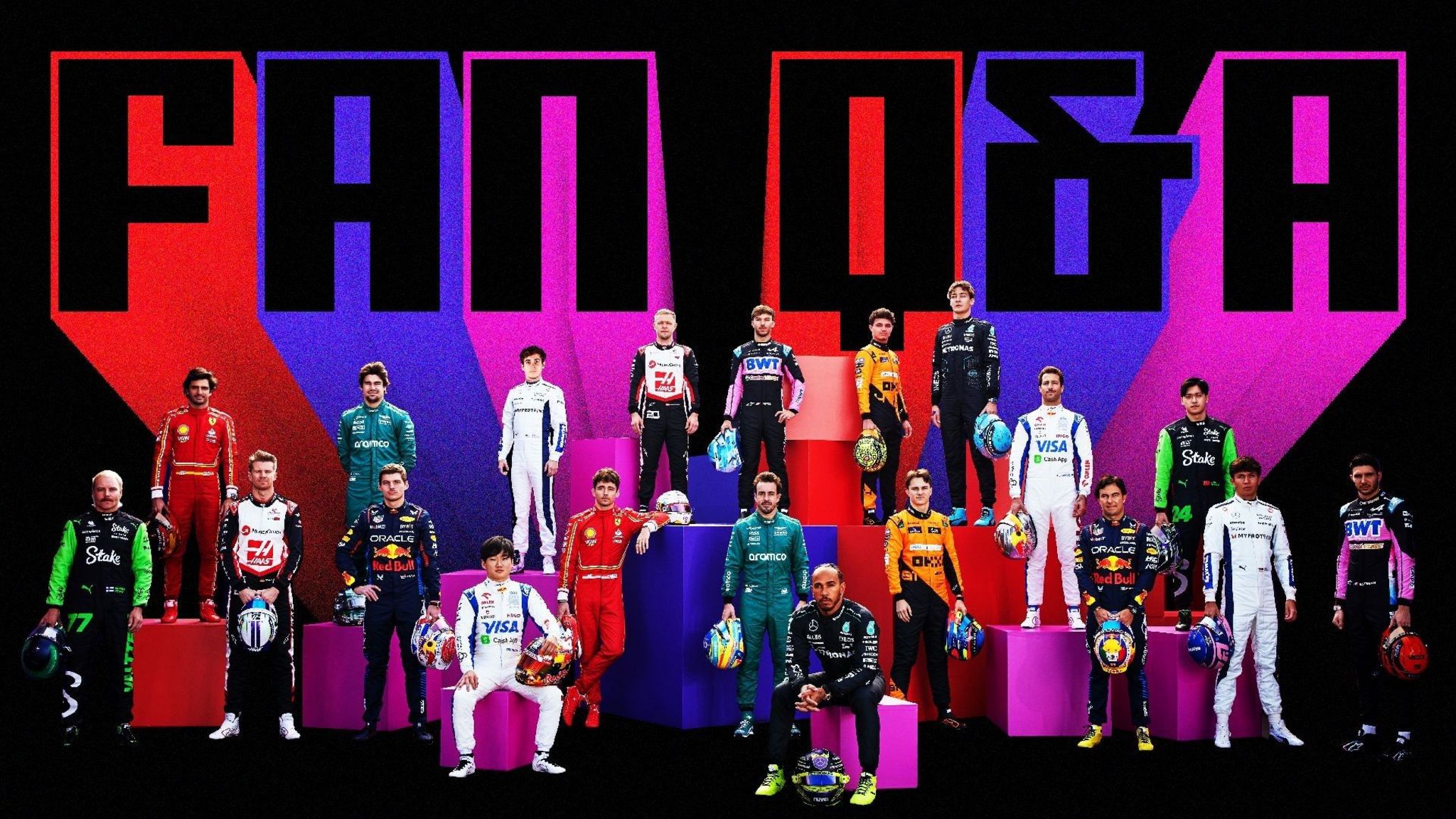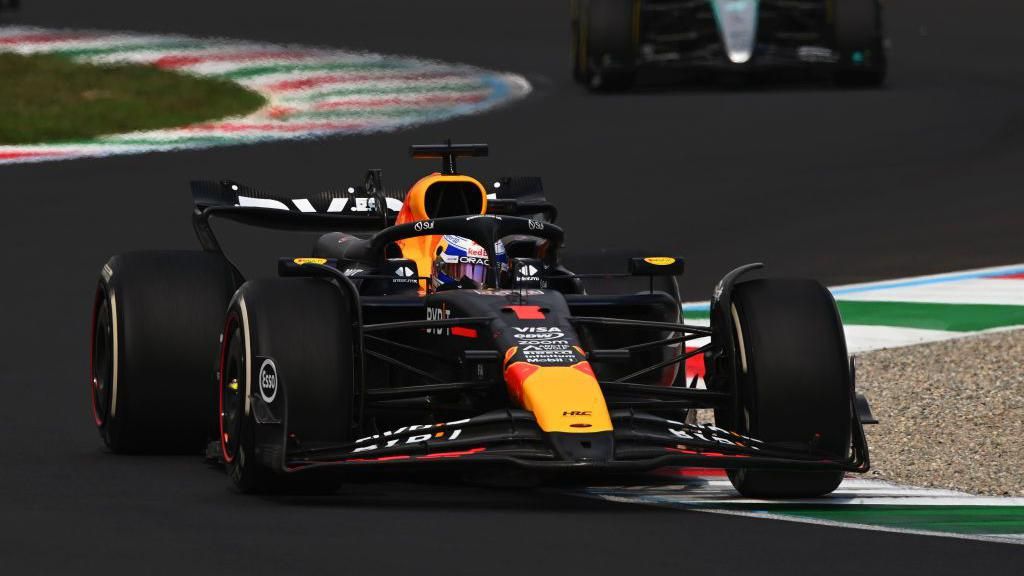
F1 continues with round 17 taking place at the Azerbaijan Grand Prix at Baku City Circuit from 13-15 September.
Last time out, Charles Leclerc secured a stunning home win for Ferrari, ahead of the McLarens of Oscar Piastri and Lando Norris.
BBC F1 correspondent Andrew Benson answers your questions before the race in Baku.
Now that Max Verstappen is bleeding points (several grands prix already, actually) do you think the title will go down to the wire? – Ioannis
There is definitely a much bigger chance of the drivers’ championship going to the wire than there was three or four races ago.
And the fact McLaren themselves now recognise that explains why they are actively admitting they will discuss whether to ask Oscar Piastri to back Lando Norris for the remaining eight races, where feasible.
Until Monza, McLaren lacked confidence that a) their car would be sufficiently competitive at a sufficient number of tracks; and b) that Red Bull, given their strength in recent seasons, would struggle enough.
But the consistency of Red Bull’s problems, the length of time since Max Verstappen won a race and McLaren’s performance at Monza have changed their mindset.
It is still a tall order – Norris needs to claw back on average nearly eight points a race to beat Verstappen by the end of the year. But it’s possible.

Do you think the bad starts for Norris and the ability to keep his tyres fresh are linked? – Anon
No, and actually there is a misunderstanding in the question.
Firstly, yes, Norris has had issues at starts and first laps, but most of them are different in nature. So, he lost position to Verstappen at the start in both Spain and the Netherlands, but they were not caused by the same issue.
And the first-lap mistake he made in Belgium – where he ran wide through a momentary lapse of judgement – was not the same as what happened at Monza – where he lost a place to Piastri because he did not want to risk braking any later for the second chicane in case he took both McLarens out as his team-mate went for the pass.
Beyond that, it’s not accurate to say Norris is struggling with tyre management. What you saw in Monza – and in Hungary – was simply a consequence of the merits of running in clear air.
People can forget that these Pirelli tyres are still incredibly sensitive to overheating, despite many years of Pirelli saying they would try to address the issue.
Any loss of downforce – such as when following another car – makes the car slide, which overheats the tyres, which affects performance.
This is why in Hungary Piastri looked faster than Norris when the Australian was in the lead, and Norris looked faster than Piastri when the positions were reversed. Simply, it’s much easier to keep the tyres in the right window when you are not behind another car.
This phenomenon was also seen with Charles Leclerc on his way to victory in Monza.
How will the wind-tunnel time limits affect the teams’ development of their 2026 cars? Could it be an advantage not winning the constructors’ title? – Philip
F1 operates a sliding scale of permitted aerodynamic development. So, the most successful team in the previous six months has the least permitted wind-tunnel and computational fluid dynamics (CFD) research time for the next six months, and the least successful the most.
So, yes, this will affect the teams as they prepare for the 2026 rules. Whoever wins the constructors’ title this year will be able to spend less time researching the rules aerodynamically in the first half of next year than the others.
But the percentage difference is not that great from one place to another, so it should not affect McLaren v Red Bull v Ferrari too much.
We hear a lot about upgrades. What are they and can you give us more details about them? – Nigel
An upgrade is a new part, or series of parts, that is aimed at improving the performance of the car.
So, for example, a new front wing, or a new floor, or a new piece of bodywork. If they are aimed at improving performance, that is classed as an upgrade.
The issue teams are encountering this season is that these upgrades are not always increasing performance.
For example, after Red Bull introduced their first upgrade of the season in Imola, two races later in Canada Mercedes technical director James Allison said he believed it had actually been a downgrade.
Red Bull vociferously denied that at the time, but the longer the season has gone on, and the more Red Bull have struggled, the more it is clear that Allison was right.
The problem teams are encountering is that the flow structures created by these current F1 cars, and the way the aerodynamics work, are so complicated that the simulation tools available to the teams are simply not accurate enough to accurately predict how the car will perform on track.
Often, teams are finding that the CFD says one thing, the wind tunnel another, and the car behaves differently again when it gets out on track.
This is why McLaren have taken so long to introduce a major upgrade since the big one in Miami that turned them into frontrunners overnight. They have wanted to be absolutely confident it will work, so they can avoid getting lost, as Red Bull have.
And it’s exactly the issue Red Bull have found with their car at the moment.
The problem is, when a team has put on a load of new parts over a period of time, and then find the car is not behaving the way they want, it is fiendishly difficult to unpick what is causing the problem – especially as there is no way of simulating it.
When was the last time there were seven different winners in a single season? – Helen
The last time there were seven different winners in a season was 2012.
But that was a very different season to this one; in fact it was almost the reverse.
In 2012, there were seven different winners in the first seven races and Fernando Alonso, then driving for Ferrari, built a substantial championship lead by virtue of being the most consistent. In fact, in the fourth-fastest car, it was probably Alonso’s best season – one of the best by any driver ever, for that matter.
But then Red Bull hit their stride in the final third of the season, and Sebastian Vettel went on a winning run, including four in a row at one point.
Add in some bad luck for Alonso – who was taken out by Romain Grosjean’s Lotus at the start in Belgium, and by the Frenchman’s team-mate Kimi Raikkonen in Japan – and Vettel overtook him.
It still went to the wire, and Vettel nearly threw it away by getting embroiled in an incident on the first lap in Brazil that damaged his car, but he fought back and clung on.
This time, Verstappen got off to a flyer by dominating the start of the season, only for his team to have apparently lost their way, while McLaren look to be taking on a similar role to Red Bull in 2012.
